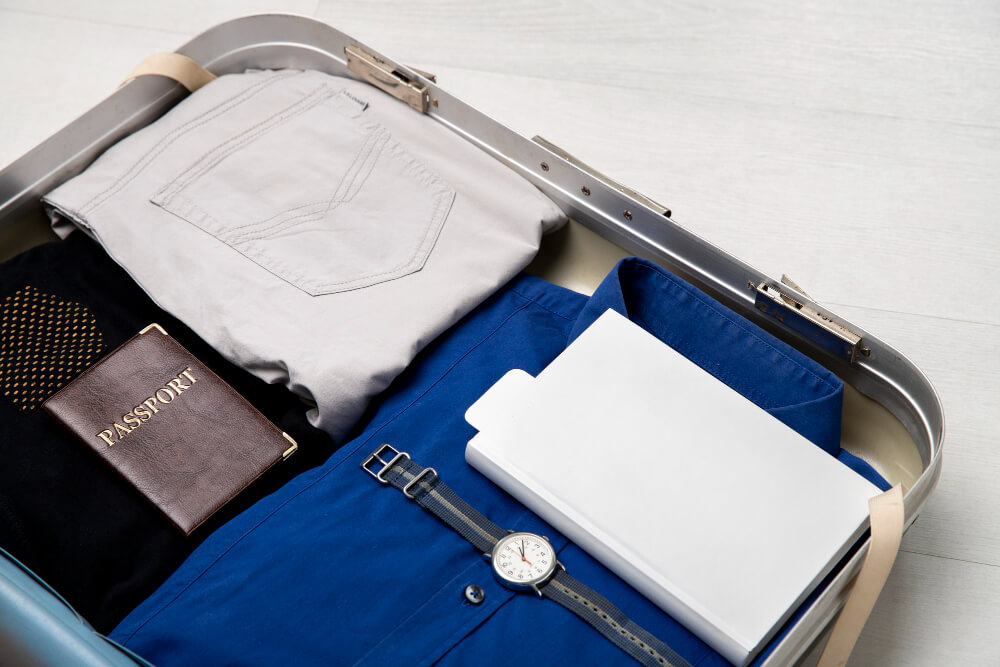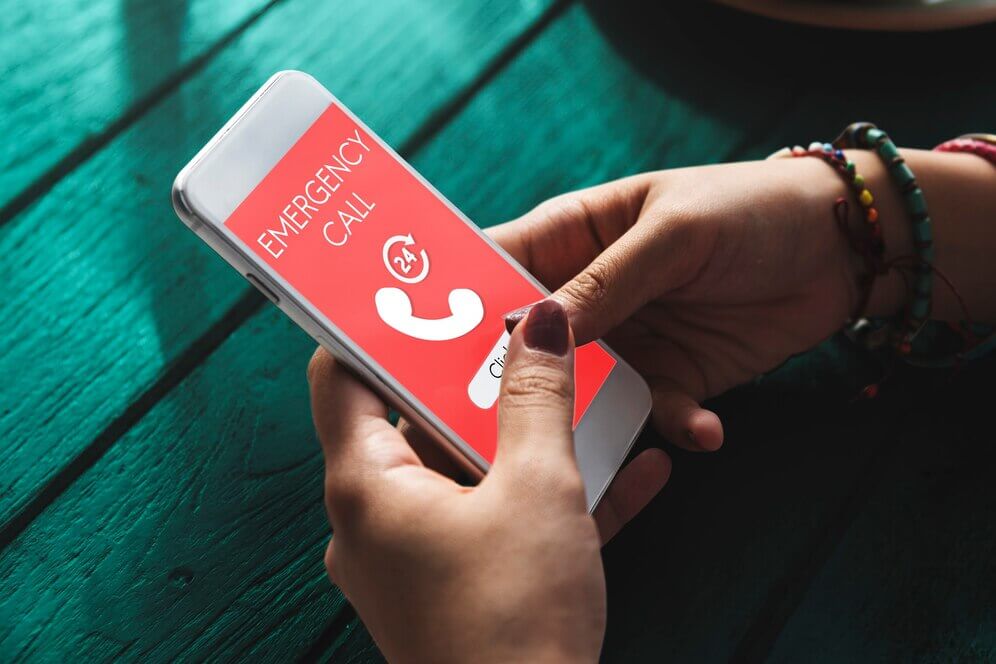1. Flight Tickets
Booking flight tickets from the USA to Europe in advance is crucial for various reasons. Firstly, early booking allows you to secure better deals and lower fares, especially during peak travel seasons when demand is high and prices tend to surge. Additionally, by planning ahead, you can have a better chance of choosing preferable flight timings and securing seats on the desired dates.
To find cheaper flight tickets, consider using several life hacks. One such hack is to be flexible with your travel dates. Being open to flying on weekdays or during off-peak hours can often lead to significant cost savings. Another useful tip is to set up price alerts on various travel websites or apps, allowing you to monitor fare fluctuations and grab the best deals when prices drop. Additionally, considering alternative airports for departure and arrival can sometimes result in more affordable options.
When looking for flights, it’s common to come across options with layovers. While these flights might take longer, they can often be more cost-effective compared to direct flights. Layovers can provide an opportunity to explore an additional city during your journey, turning a mundane wait into a mini-adventure. However, it’s essential to be mindful of the duration of the layover, as excessively long layovers might lead to fatigue and unnecessary delays.
Regarding baggage, it’s advisable to pack efficiently and adhere to the airline’s baggage regulations. Checking the baggage policy of the chosen airline before packing is essential to avoid any extra fees or inconveniences at the airport. Additionally, consider packing a compact carry-on with essentials, including a change of clothes and important documents, in case of any unexpected delays or baggage mishaps.

2. Budget Planning
Planning for the trip expenses:
- Accommodation: Look for affordable yet comfortable lodging options that suit your preferences and are conveniently located.
- Food and Dining: Plan a daily budget for meals, and explore a mix of local dining experiences and self-catering options to balance costs.
- Local Transportation: Research public transportation options and consider getting travel passes or cards for cost-effective commuting within the cities you plan to visit.
Preparing for unexpected expenses:
- Emergency Fund: Set aside some extra money for unexpected situations or emergencies that might arise during your trip.
- Travel Insurance: Invest in comprehensive travel insurance to safeguard yourself against potential costs related to trip cancellations, medical emergencies, or unexpected events.
By taking these factors into account and planning your budget accordingly, you can ensure a more financially stable and stress-free trip to Europe.
3. Visa Requirements
For American travelers, visas are generally not required for short-term stays in the Schengen Area, which includes popular destinations like France, Italy, Germany, and Spain, among others. However, it is crucial to be aware of the specific limitations on the duration of stay, which is typically 90 days within a 180-day period. Overstaying this limit can result in legal consequences or difficulties in future travels.
Despite the visa waiver program, certain European countries, such as Russia, Belarus, and Ukraine, still require American citizens to obtain visas before their arrival. Each country has its own visa application process, which usually involves submitting the required documentation, such as a valid passport, a completed application form, and any additional requested materials, to the respective embassy or consulate.
It’s essential to research the specific visa requirements for the countries you plan to visit in Europe well in advance of your trip. Contact the relevant embassies or consulates and familiarize yourself with the application procedures to ensure a smooth and hassle-free travel experience.
4. Driver’s License
Most European countries recognize American driver’s licenses, provided that you have an International Driving Permit (IDP) alongside it. The IDP serves as a translation of your license and is particularly helpful in non-English speaking countries. When renting a car, it’s often required to present both your driver’s license and IDP to the rental agency.
To obtain an International Driving Permit through the American Automobile Association (AAA), you need to submit a completed application, two passport-sized photographs, as well as copies and originals of your driver’s license. Please note that the IDP is valid for one year. If your International Driving Permit has expired, you can order it online.
For car rentals in Europe, you generally need to provide your passport, International Driving Permit (if applicable), and a credit card. It is advisable to book your car rental in advance with a reputable rental agency and carefully review the rental conditions, including insurance coverage, vehicle usage rules, and any territorial restrictions.
5. Travel Apps
When traveling to Europe, consider installing the following apps to facilitate your journey:
- Google Maps or Maps.me: Reliable for navigation, offline maps, and public transportation directions.
- Google Translate or Deeple: Useful for translating signs, menus, and basic conversations in foreign languages.
- XE Currency or OANDA Currency Converter: Essential for quick currency conversions and avoiding misunderstandings.
- TripIt or Tripadvisor: Ideal for organizing travel itineraries, discovering attractions, and reading reviews.
- Rome2rio: Helpful for planning intercity travels and exploring various transportation options.
- Uber, Bolt or local ride-sharing apps: Convenient for hassle-free and often cost-effective transportation within cities.
- Skyscanner or Kayak: Useful for comparing flight prices, finding the best deals, and planning your air travel.
- OpenTable or TheFork: Handy for making restaurant reservations and exploring dining options in your vicinity.
- WhatsApp, Telegram or Viber: Recommended for staying in touch with friends and family back home via messaging and calls over Wi-Fi.

6. Accommodation
When renting accommodation in Europe, consider the following tips and websites:
- Websites for Accommodation Rental: Utilize platforms like Airbnb, Booking.com, and VRBO to find a variety of accommodation options suitable for your needs.
- Choosing Between Apartment and Hotel Room: Opt for an apartment for longer stays or when you prefer a more homely atmosphere. Select a hotel room when you desire amenities, such as room service and daily cleaning.
- Selecting the Location: Research the neighborhoods and consider proximity to public transportation, attractions, and local amenities. Choose a central location for easy access to popular sights and activities, especially in larger cities.
- Reading Reviews: Pay attention to reviews and ratings to gauge the experiences of previous guests and ensure the credibility of the accommodation and its host.
- Checking Cancellation Policies: Review the cancellation policies before booking to understand the terms in case your plans change unexpectedly.
- Communicating with Hosts: Communicate with hosts to clarify any questions you may have about the property, amenities, or local area before confirming your reservation.
- Understanding Additional Fees: Be aware of any extra fees, such as cleaning charges or security deposits, and factor them into your budget when comparing different accommodation options.
7. Travel Insurance
When traveling, it’s crucial to have adequate medical insurance coverage. Here are some tips for choosing the right travel medical insurance and understanding its application nuances:
- Coverage Considerations: Opt for a comprehensive travel medical insurance plan that includes coverage for medical emergencies, hospitalization, and medical evacuation, as well as trip cancellation or interruption.
- Duration of Coverage: Ensure that your insurance policy covers the entire duration of your trip, including any pre-planned extensions. Consider purchasing insurance that provides coverage for unforeseen circumstances leading to trip delays or cancellations.
- Destination-Specific Coverage: Check if the insurance policy provides coverage in the specific countries you plan to visit. Some countries may require specific medical coverage, so verify these requirements before your trip.
- Pre-Existing Conditions: If you have pre-existing medical conditions, choose a policy that offers coverage for these conditions or provides a waiver for pre-existing conditions to avoid any potential complications during your trip.
- Emergency Assistance Services: Look for a policy that offers 24/7 emergency assistance services, including access to multilingual support, medical consultation, and assistance with medical referrals and coordination.
- Policy Exclusions and Limitations: Familiarize yourself with the policy’s exclusions and limitations, such as specific activities not covered or restrictions related to high-risk activities like extreme sports, to ensure you’re aware of any potential gaps in coverage.
- Claims Procedure: Understand the claims procedure and keep all necessary documents, including medical reports and receipts, for any potential claims. Familiarize yourself with the process for filing claims and the required documentation in the event of a medical emergency.

8. Packing
What to Pack:
- Clothing: Choose versatile items that can be easily mixed and matched, considering the weather conditions at your destination.
- Toiletries: Carry small quantities of shampoo, body wash, and other essentials in travel-sized plastic containers.
- Medications: Include headache and stomachache remedies, as well as any prescription medications you regularly take.
- Documents: Take your passport, travel insurance, tickets, reservations, and electronic copies in case of any paper copies being misplaced.
Preparing Your Carry-On:
- Personal Items: Place personal items like money, jewelry, and valuable documents in your carry-on bag.
- Chargers: Remember to pack chargers for your phone, tablet, or laptop, along with any necessary adapters for different plug sockets.
- Entertainment: Include a book, tablet, or headphones in your carry-on to keep yourself entertained during the flight.
Space-Saving Tips:
- Folding Techniques: Use space-saving folding techniques, such as rolling clothes, to make the most of the available space in your suitcase.
- Versatile Items: Optimize your wardrobe by selecting versatile clothing items that can be worn in different combinations for various occasions.
- Selecting Small Accessories: Avoid overpacking unnecessary accessories and choose ones that can complement multiple outfits.
9. Health Precautions
Europe is generally considered a safe destination for tourists in terms of health. Most countries boast high-quality healthcare services and adhere to strict hygiene standards. The continent is relatively free from many of the infectious diseases typically found in other parts of the world.
According to the World Health Organization (WHO), many European countries have low incidences of infectious diseases. Common ailments in Europe, such as the flu, common colds, and food poisoning, typically pose minimal threat to tourists when basic precautions are observed.
While additional precautions may be advised for those who are particularly health-conscious or seek thorough preparation, adhering to basic hygiene practices and a healthy lifestyle can ensure that most tourists enjoy their time in Europe without undue concern for their health.
Health Check Tips:
- Consultation with a Healthcare Provider: Schedule a visit with your healthcare provider to ensure you’re in good health and to address any specific concerns related to your trip to Europe.
- Routine Vaccinations: Ensure that routine vaccinations, such as measles, mumps, rubella, and influenza, are up to date before your trip.
- Destination-Specific Vaccinations: Check if any specific vaccinations are recommended or required for the countries you plan to visit in Europe, such as hepatitis A, hepatitis B, or tick-borne encephalitis, based on your travel itinerary.
- Awareness of Local Diseases: Be aware of prevalent diseases in the region you are visiting and take necessary precautions, such as using insect repellent to prevent mosquito-borne illnesses.

COVID-19 and Vaccination:
- COVID-19 Precautions: Stay updated on the COVID-19 situation in the countries you plan to visit and follow local guidelines and restrictions related to the pandemic.
- Vaccination Status: Check if your destination requires proof of COVID-19 vaccination or a negative test result upon entry and ensure you have the necessary documentation.
- Booster Shots: Stay informed about any recommendations for COVID-19 booster shots and adhere to the guidelines set by health authorities to maintain protection against the virus.
Prioritizing your health and well-being before and during your trip to Europe is essential for a safe and enjoyable travel experience.
10. Itinerary Planning
Planning a travel itinerary across Europe requires careful consideration and research. Here are some tips on how to plan your journey effectively, along with some of the best destinations to visit and the ideal time to explore them:
Route Planning Tips:
- Research and Prioritize: Research various European destinations, consider your interests, and prioritize the places you most want to visit.
- Consider Logistics: Plan your route based on proximity and accessibility between destinations to optimize your travel time and minimize transit.
- Balance Your Itinerary: Strike a balance between well-known tourist hotspots and off-the-beaten-path locations to get a comprehensive experience of Europe’s diverse cultures and landscapes.
- Allocate Time Wisely: Allocate sufficient time in each location to explore its attractions and immerse yourself in the local culture, without feeling rushed.

Best Places to Visit:
- Paris, France: Explore iconic landmarks such as the Eiffel Tower, Louvre Museum, and Notre-Dame Cathedral.
- Rome, Italy: Discover historical treasures like the Colosseum, Vatican City, and the Pantheon.
- Barcelona, Spain: Enjoy the architectural wonders of Antoni Gaudí, including the Sagrada Família and Park Güell.
- Amsterdam, Netherlands: Experience the charm of the canal network, Van Gogh Museum, and Anne Frank House.
- Santorini, Greece: Relax on picturesque beaches, indulge in delicious Greek cuisine, and admire the stunning sunsets.
Ideal Time for Visits:
- Spring (April to June): Pleasant weather and blooming landscapes make it an ideal time to explore various European cities.
- Early Autumn (September to October): Mild temperatures, fewer crowds, and vibrant autumn foliage create a delightful ambiance for travel.
By strategically planning your route, selecting must-see destinations, and timing your visits during the optimal seasons, you can make the most of your European travel adventure.
11. Communication
Roaming Services:
Pros:
- Convenient for quick access to communication without the need for a new SIM card.
- Offers a seamless connection using your existing US phone number.
Cons:
- Can incur exorbitant charges for data usage and calls, resulting in unexpectedly high bills upon return.
- Limited coverage and slower data speeds compared to local SIM cards.

Local SIM Cards:
Pros:
- Cost-effective for extensive data usage and local calls within the European country.
- Provides better network coverage and faster data speeds, ensuring a smoother travel experience.
Cons:
- Requires a compatible unlocked phone to switch out SIM cards, which might not be convenient for all travelers.
- Inconvenience of having a different phone number, potentially causing confusion for contacts.
eSIM Technology:
eSIM, or embedded SIM, is a digital SIM card that allows for multiple mobile network profiles to be stored on a device simultaneously. This technology enables users to switch between different network providers without the need for a physical SIM card.
Ensuring Uninterrupted Connectivity: For seamless connectivity, Americans can consider activating an eSIM before their trip, enabling them to add a local data plan while keeping their primary number accessible. This approach ensures continuous access to data, calls, and messages without incurring excessive roaming charges.
By carefully assessing the benefits and drawbacks of roaming services, local SIM cards, and eSIM technology, travelers can make informed decisions to maintain reliable and affordable communication throughout their European journeys.
12. Language
Understanding a few phrases in the local language while traveling in Europe can significantly enhance the overall experience. It showcases respect for the local culture and fosters better communication with the locals. While many European countries have a good command of the English language, some regions may have a lower proficiency level.
English Proficiency in European Countries:
High Proficiency:
- Nordic countries like Sweden, Denmark, Norway, and the Netherlands often display high levels of English proficiency, with many locals fluent in English.
- Tourist hubs such as Germany, Switzerland, and Austria typically have a significant portion of the population proficient in English, especially in urban areas and popular tourist destinations.

Lower Proficiency:
- Southern European countries such as Spain, Italy, and Portugal may have a lower overall proficiency level in English, particularly among older generations and in rural regions.
- Eastern European countries like Hungary, Romania, and Bulgaria might have varying degrees of English proficiency, depending on the location and the exposure to international visitors.
While English is commonly spoken in many European countries, travelers can benefit from learning a few local phrases to navigate effectively and connect with locals, especially in areas where English proficiency might be limited.
13. Local Customs
Cultural differences between Europe and the United States can offer a unique and enriching experience for travelers. While there are similarities, several distinctions may influence the travel experience, such as social norms, etiquette, and dining customs. Additionally, certain European countries offer a more exotic or culturally diverse encounter for American tourists.
Cultural Contrasts for Travelers:
- Social Norms: Europeans often prioritize a relaxed pace of life and value extended social interactions, while Americans might be accustomed to a more fast-paced lifestyle.
- Etiquette: Cultural norms related to greetings, personal space, and expressions of gratitude can differ between Europe and the United States, highlighting the importance of cultural sensitivity and awareness.
- Dining Customs: European dining customs, including meal times, table manners, and restaurant service expectations, can vary significantly from American dining practices, emphasizing the significance of adapting to local customs.
Exotic European Countries for Americans:
- Greece: With its rich history, stunning landscapes, and vibrant culture, Greece offers American travelers a unique blend of ancient heritage and breathtaking Mediterranean beauty.
- Croatia: Known for its picturesque coastline, historic cities, and vibrant cultural festivals, Croatia provides an off-the-beaten-path adventure for Americans seeking a diverse and exotic European experience.
- Turkey: Bridging the gap between Europe and Asia, Turkey offers a fusion of cultures, captivating historical sites, and a rich culinary tradition, providing an immersive and diverse travel encounter for American tourists.
Exploring the cultural contrasts and exotic destinations within Europe can offer American travelers a memorable and enriching experience, fostering a deeper appreciation for the diverse heritage and customs that the continent has to offer.
14. Emergency Contacts
Across the European Union, the general emergency number is 112, which connects callers to police, medical, and fire services. This unified number ensures consistency and ease of access for travelers across EU member states. However, in non-EU European countries, emergency numbers may differ, and travelers should be aware of these variations before their trip.

For instance, countries like Switzerland use 117 for police and 144 for medical emergencies. In Russia and Belarus, the police can be reached at 102, while medical emergencies are directed to 103. It’s crucial to familiarize yourself with the specific emergency numbers of each country you plan to visit, especially those that are not part of the European Union, to ensure you can swiftly access the necessary assistance in case of an emergency.
15. Public Transport
When traveling in Europe, using public transportation can be an efficient and cost-effective way to navigate various cities and regions. Here’s a guide on how to make the most of public transportation during your European journey:
- Research Transportation Options: Before your trip, familiarize yourself with the public transportation options available in each city, such as buses, trams, trains, and metros.
- Obtain Transit Maps: Acquire transit maps from local transportation authorities or tourist information centers to understand the routes, schedules, and transfer points.
- Purchase Tickets or Passes: Buy tickets or travel passes from kiosks, ticket machines, or mobile apps to enjoy discounted fares and convenient access to multiple forms of transportation.
- Validate Tickets: If required, remember to validate your ticket at designated machines or validators before boarding to avoid fines or penalties.
- Follow Etiquette: Respect local etiquette by offering seats to the elderly or disabled, adhering to quiet carriage rules, and avoiding eating or drinking on certain forms of public transportation.
- Plan Routes in Advance: Utilize journey planning apps or websites to map out your routes, determine transfer points, and estimate travel times to optimize your itinerary.
- Be Mindful of Peak Hours: Avoid the rush hours, if possible, to experience a more comfortable and less crowded commute on buses and trains.
- Stay Alert to Scams: Be vigilant against potential scams or pickpocketing attempts, especially in busy transportation hubs and crowded vehicles.
By following these tips, you can navigate the public transportation systems in Europe with ease, allowing you to explore the diverse attractions and cultural hotspots conveniently and affordably.
16. Safety Measures
Certainly, here are some safety tips to consider while traveling in Europe:
- Stay Aware: Be mindful of your surroundings and stay alert in crowded areas, tourist spots, and public transportation hubs.
- Secure Belongings: Keep your valuables, including passports, money, and electronics, secure in a concealed money belt or a locked bag.
- Use Reliable Transport: Opt for licensed taxis or reputable ride-sharing services, especially during late hours, to ensure safe transportation.
- Emergency Contacts: Keep a list of emergency contacts, including local authorities and embassy details, in case of any unforeseen incidents.
- Stay Informed: Stay updated on local news and travel advisories to be aware of any potential safety concerns or risks in your destination.
By adhering to these safety measures, you can enhance your personal security and minimize potential risks during your European travels.
17. Photocopies
Creating photocopies of your documents is a valuable safety measure during travel. Here’s why it’s essential:
- Emergency Preparedness: In the event of lost or stolen documents, having photocopies can facilitate the process of acquiring replacements from the nearest embassy or consulate.
- Identity Verification: Photocopies can serve as a form of identification in situations where you prefer not to carry your original documents, reducing the risk of identity theft or fraud.
- Insurance Claims: In case of theft or loss of belongings, including passports or identification, photocopies can support insurance claims and expedite the process of reimbursement.
- Quick Access to Information: Having copies readily available can provide quick access to essential details, aiding authorities in resolving any legal or administrative issues efficiently.
By making photocopies of your important travel documents, you can mitigate potential risks and ensure a smoother and more secure travel experience

18. Local Cuisine
European cuisine encompasses a rich diversity of culinary traditions, each known for its distinctive characteristics and exquisite dishes. Here are some cuisines from well-known European countries and their highlights:
- France: French cuisine is renowned for its refined gastronomic experience, featuring delicacies such as foie gras and baguettes, along with classic dishes like Coq au Vin and croissants.
- Italy: Italian cuisine is known for its variety of pasta, pizza, traditional sauces like pesto and ragù, and fresh seafood, making it one of the most beloved worldwide.
- Spain: Spanish cuisine is famous for its tapas, paella, jamón, and sangria, offering a rich medley of flavors from savory to sweet.
- Greece: Greek cuisine includes dishes such as moussaka, salads with olives, feta, and olive oil, as well as dolmades, which are grape leaves stuffed with vegetables and rice.
- Germany: German cuisine offers dishes such as Bavarian sausages, schnitzel, and potato dishes, along with a variety of beer.
- United Kingdom: British cuisine is renowned for traditional dishes including fish and chips, roast lamb, and puddings, as well as an array of tea varieties.
- Sweden: Swedish cuisine is known for dishes such as meatballs, toast Skagen, and sweet pastries like cinnamon buns.
- Poland: Polish cuisine includes dishes such as bigos, pierogi dumplings, kotlet schabowy, and various types of pies.
Sampling these renowned local dishes can immerse you in an authentic culinary experience, allowing you to savor the rich cultural heritage of European countries.
19. Currency Exchange
Across most of Europe, the common currency used is the Euro. However, some countries still maintain their respective national currencies. Here are a few examples:
Countries using the Euro: Germany, France, Italy, Spain, Greece, the Netherlands, among others.
Countries using local currencies: The United Kingdom (British Pound Sterling), Sweden (Swedish Krona), Poland (Polish Zloty), among others.
To secure the best currency exchange rates, you can utilize online services like XE.com or OANDA.com, which provide real-time updates on currency rates. Additionally, before your trip, consider consulting your bank to understand potential fees for international cash withdrawals and for recommendations on using ATMs abroad.
20. Adaptability
Adaptability is crucial when traveling in Europe due to the continent’s rich diversity in cultures, languages, and customs. Here’s why it’s essential:
- Cultural Diversity: Europe is home to a myriad of cultures and traditions, each with its own unique practices and etiquettes. Being adaptable allows you to embrace and respect these differences, fostering meaningful interactions with locals.
- Language Variations: While English is commonly spoken in many European countries, being open to learning basic phrases in the local language showcases respect and can facilitate smoother communication, especially in more rural or non-touristy areas.
- Changing Environments: European countries boast diverse landscapes, ranging from bustling cities to serene countryside and breathtaking coastlines. Adaptability enables you to adjust to different environments, weather conditions, and lifestyles, enhancing your overall travel experience.
- Culinary Adventures: European cuisine varies widely from country to country, presenting an array of flavors and delicacies. Being adaptable to trying new dishes and embracing local dining customs allows you to fully immerse yourself in the culinary delights each destination has to offer.
By fostering adaptability, you can cultivate a deeper appreciation for the richness of European cultures and create memorable experiences that go beyond the surface of typical tourist activities.
21. Register with the State Department
Registering with the State Department, specifically through the Smart Traveler Enrollment Program (STEP), is important when traveling abroad, including in Europe. Here’s why and how to do it:
Why it’s Important:
- Safety Alerts: You receive important information from the nearest U.S. embassy or consulate about safety conditions in your destination country.
- Emergency Assistance: In case of natural disasters, civil unrest, or family emergencies, the U.S. embassy can locate and assist you more easily if you are registered.
- Evacuation Coordination: During unforeseen crises, the State Department can aid in your evacuation if necessary.
How to Register:
- Access STEP Website: Visit the Smart Traveler Enrollment Program website.
- Create an Account: Provide your personal information, travel itinerary, and emergency contact details.
- Receive Confirmation: Once you’ve completed the registration, you will receive a confirmation email with further instructions and information.
By registering with the State Department, you ensure that you have access to crucial support and resources during your travels, providing peace of mind and security throughout your trip.

Published October 21, 2023 • 22m to read





